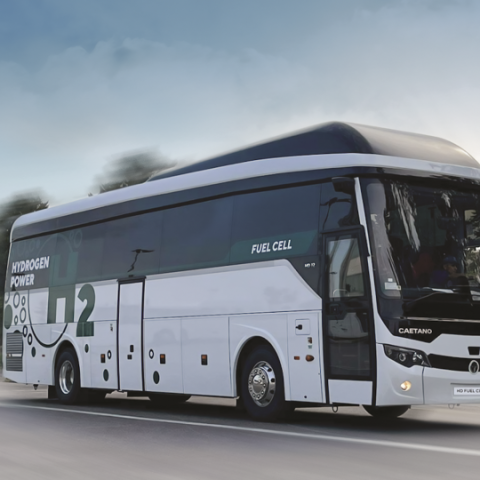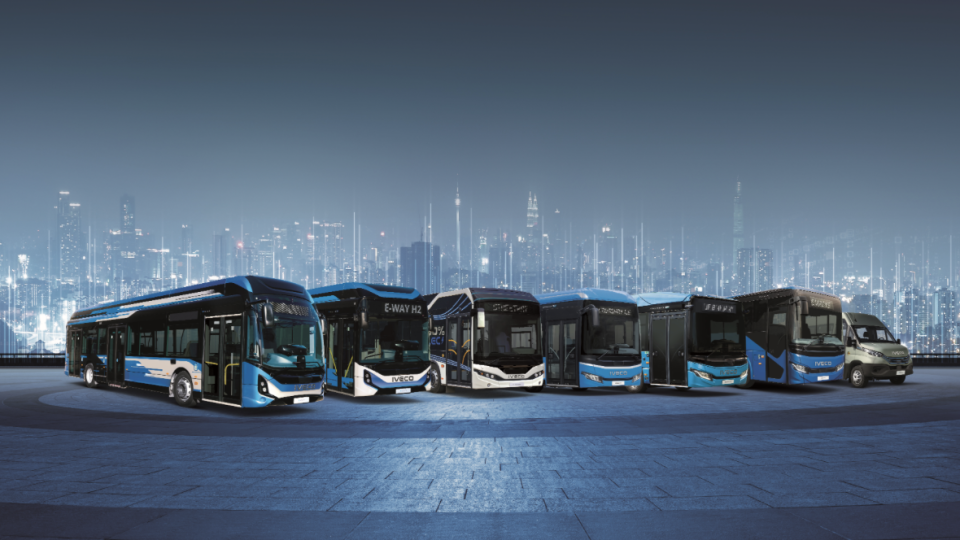EU Parliament approves CO2 reduction roadmap for HD vehicles. Now Council OK is needed before entering into force
The European Parliament approved on 10th April a mandatory target to reduce 90% of CO2 emissions from new trucks by 2040. A final step is needed: the Council still needs to formally approve the agreement before it can enter into force (earlier this year, Council and Parliament already reached “a provisional agreement”) By 2030, new urban buses will […]

The European Parliament approved on 10th April a mandatory target to reduce 90% of CO2 emissions from new trucks by 2040. A final step is needed: the Council still needs to formally approve the agreement before it can enter into force (earlier this year, Council and Parliament already reached “a provisional agreement”)
By 2030, new urban buses will need to reduce their emissions by 90% and become zero-emission vehicles by 2035.
CO2 emissions from large trucks (including vocational vehicles, such as garbage trucks, tippers or concrete mixers), intercity buses and coaches will have to be reduced by 45% for the period 2030-2034, 65% for 2035-2039 and 90% as of 2040. Emissions reduction targets are also set for trailers (7.5%) and semi-trailers (10%), starting from 2030.
Regulation to reduce CO2 of heavy-duty transport
The regulation, addressing emissions from new trucks, buses and trailers, was endorsed by MEPs with 341 votes in favour, 268 against and 14 abstentions.
The regulation raises the ambition of previous EU legislation and widens the scope of vehicles covered, setting the stage for one of the world’s most robust regulatory climate frameworks for heavy-duty vehicles.
ICCT stresses that “The regulatory scope has been significantly expanded to include more truck types, buses, coaches, trailers, and vocational vehicles such as garbage trucks. Under this new scope, over 90% of all new truck and bus sales are covered by the revised CO2 standards, up from 65% under the original standards. Small trucks of less than 5 tonnes remain unregulated but will be considered in the review in 2027. Despite last-minute interventions, the role of e-fuels remains excluded from the heavy-duty CO2 standards. The European Commission is tasked with assessing the role such carbon neutral fuels could play in the regulation by 2027.”
ACEA: infrastructure is key
As for ACEA, leading European truck and bus CEOs have escalated their call to Europe’s policy makers with a Manifesto for getting zero-emission trucks and buses on Europe’s roads, launched today ahead of crucial European elections. Infrastructure is key: io put the scale of the challenges in context, there is almost no public charging infrastructure suitable for trucks and buses available today. Europe needs at least 50,000 publicly accessible chargers and at least 700 hydrogen refilling stations to achieve the CO2-reduction target of 45% by 2030.
“What seemed inconceivable just years ago is now the unequivocal path forward. This historic legislation offers clarity to industry, leveraging zero-emission heavy vehicles as the most technologically feasible and cost-effective route to meet Europe’s climate goals. The trucking industry, Europe’s second largest contributor to transport CO2 emissions, is about to experience a transformative shift,” said Felipe Rodríguez, Director of the Heavy-duty Vehicle Program at the International Council of Clean Transportation (ICCT), a research organization advising governments on transport decarbonization.
“European regulators are seizing the opportunity to boost a booming industry: electric trucks. Over the past year, these zero-emission vehicles have been hitting EU roads, with sales tripling between 2022 and 2023. Shares of zero-emission city buses also accelerated last year, overtaking diesel sales to become the most popular powertrain, and reaching an all-time high of over 40% by the end of 2023,” said Eamonn Mulholland, ICCT’s expert on Europe’s truck CO2 standards.








